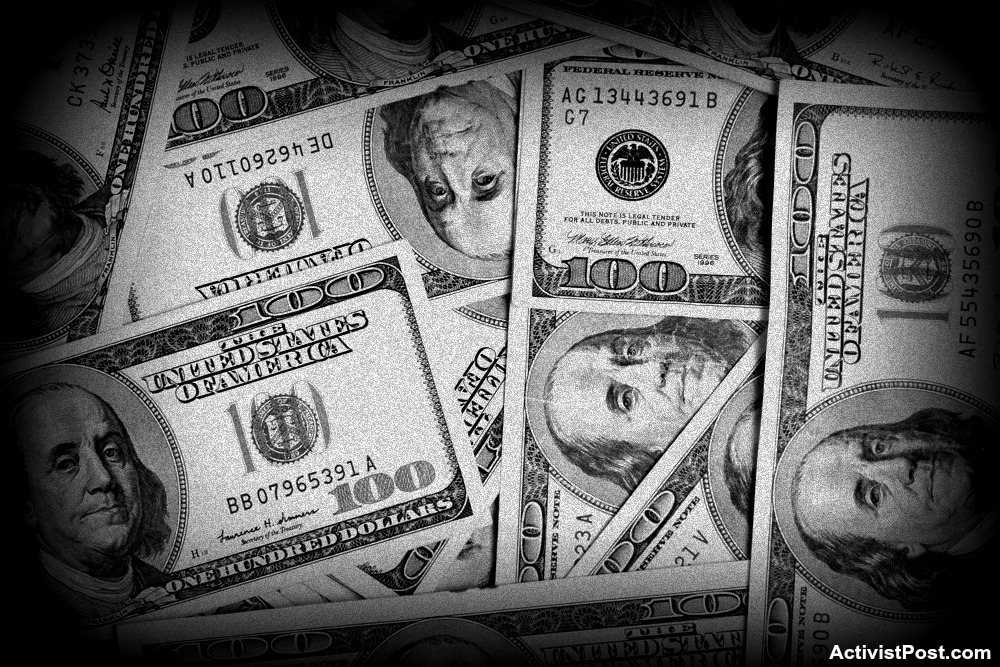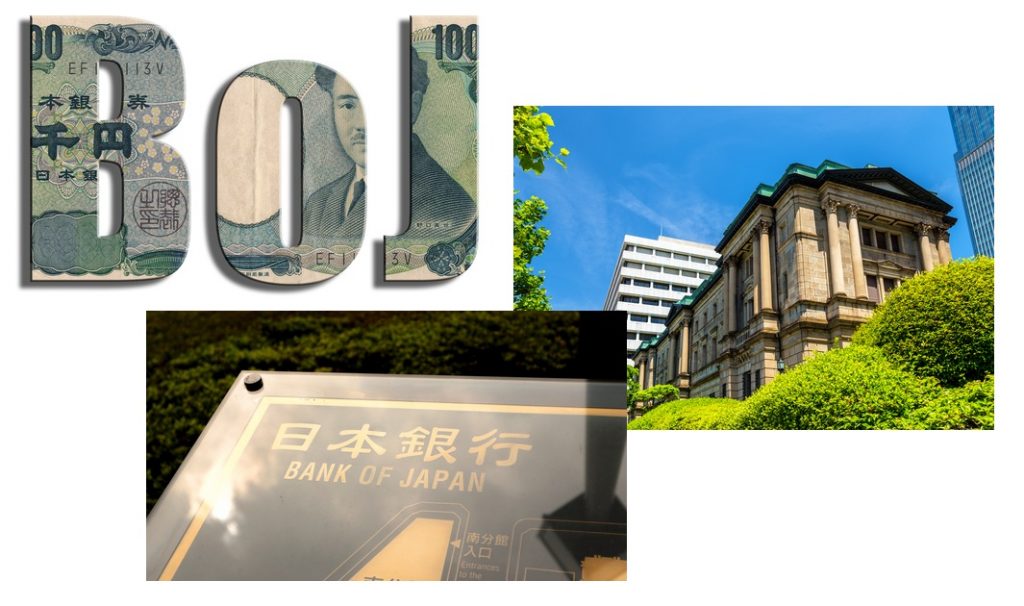Home » Posts tagged 'japan' (Page 2)
Tag Archives: japan
Japan Set To Release 1.2 Million Tons Of Radioactive Fukushima Water Into Ocean, Causing “Immeasurable Damage”
Japan Set To Release 1.2 Million Tons Of Radioactive Fukushima Water Into Ocean, Causing “Immeasurable Damage”
Just in case a global viral pandemic, whose sources are still unclear and apparently now include human feces, wasn’t enough, the global outrage meter is about to go “up to eleven” with Japan now set to flood the world’s oceans with radioactive water.
In a move that will surely prompt a furious response from Greta Thunberg’s ghost writers (unless of course it doesn’t fit a very narrow agenda), a panel of experts advising Japan’s government on a disposal method for the millions of tons of radioactive water from the destroyed Fukushima nuclear plant on Friday recommended releasing it into the ocean. And, as Reuters notes, based on past practice it is likely the government will accept the recommendation.
Tokyo Electric, or Tepco, has collected nearly 1.2 million tonnes of contaminated water from the cooling pipes used to keep fuel cores from melting since the plant was crippled by an earthquake and tsunami in 2011. The water is stored in huge tanks that crowd the site.
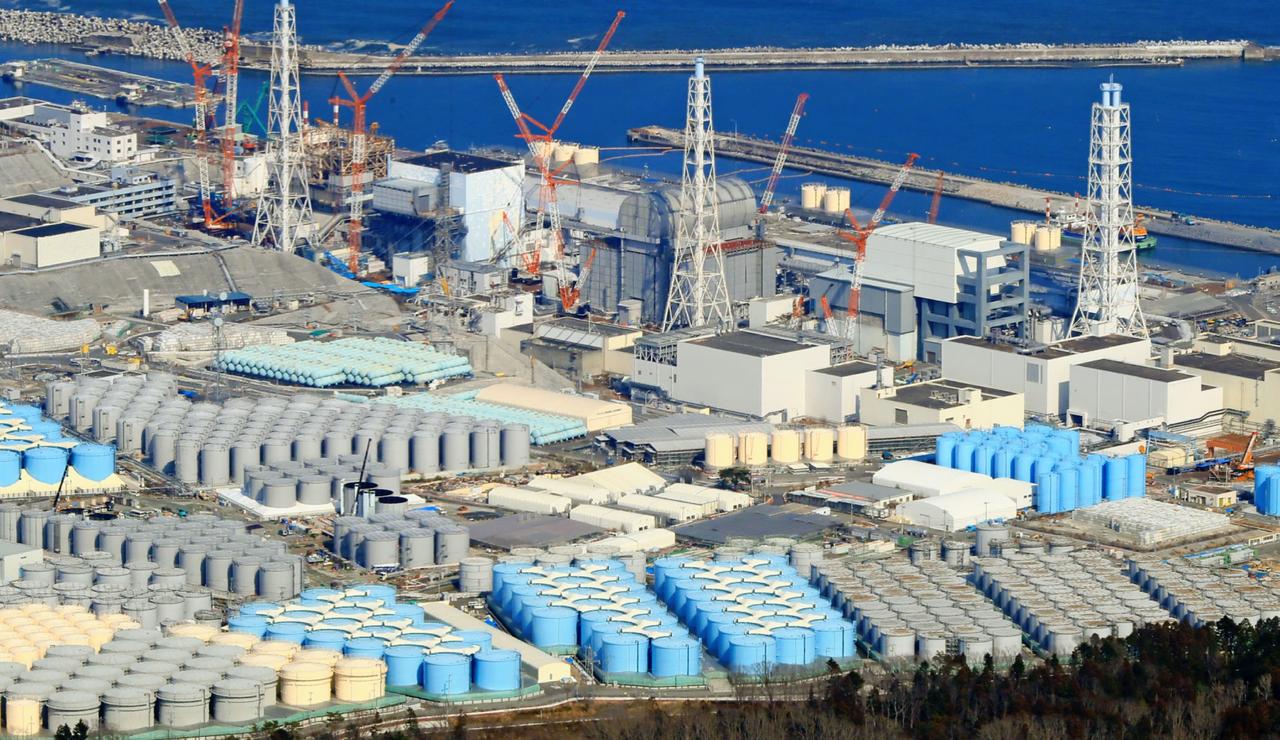
The panel under the industry ministry came to the conclusion after narrowing the choice to either releasing the contaminated water into the Pacific Ocean or letting it evaporate – and opted for the former, even though it means that Japan’s neihgbors will now have to suffer the consequences of the biggest nuclear disaster since Chernobyl.
Previously the committee had ruled out other possibilities, such as underground storage, that lack track records of success. At the meeting, members stressed the importance of selecting proven methods and said “the government should make clear that releasing the water would have a significant social impact.”
…click on the above link to read the rest of the article…
“No Chinese Allowed”: Hysteria Grips Asia As Millions Travel Amid Viral Outbreak
“No Chinese Allowed”: Hysteria Grips Asia As Millions Travel Amid Viral Outbreak
On Wednesday, health officials in China once again announced a sharp increase in the number of reported cases of the mysterious new coronavirus that is now confirmed to have caused at least nine deaths, as we reported last night.
As hundreds of millions of Chinese leave the country for vacation destinations abroad – all part of what the NYT described as the largest human migration on Earth – the hysteria has reached a fever pitch.
In Japan, one shopkeeper in the mountain town of Hakone (a popular vacation destination) has been heavily criticized for hanging a sign outside his door reading ‘no Chinese allowed’. The full message displayed on the sign (pictured below) reads: “No Chinese are allowed to enter the store…I do not want to spread the virus.”
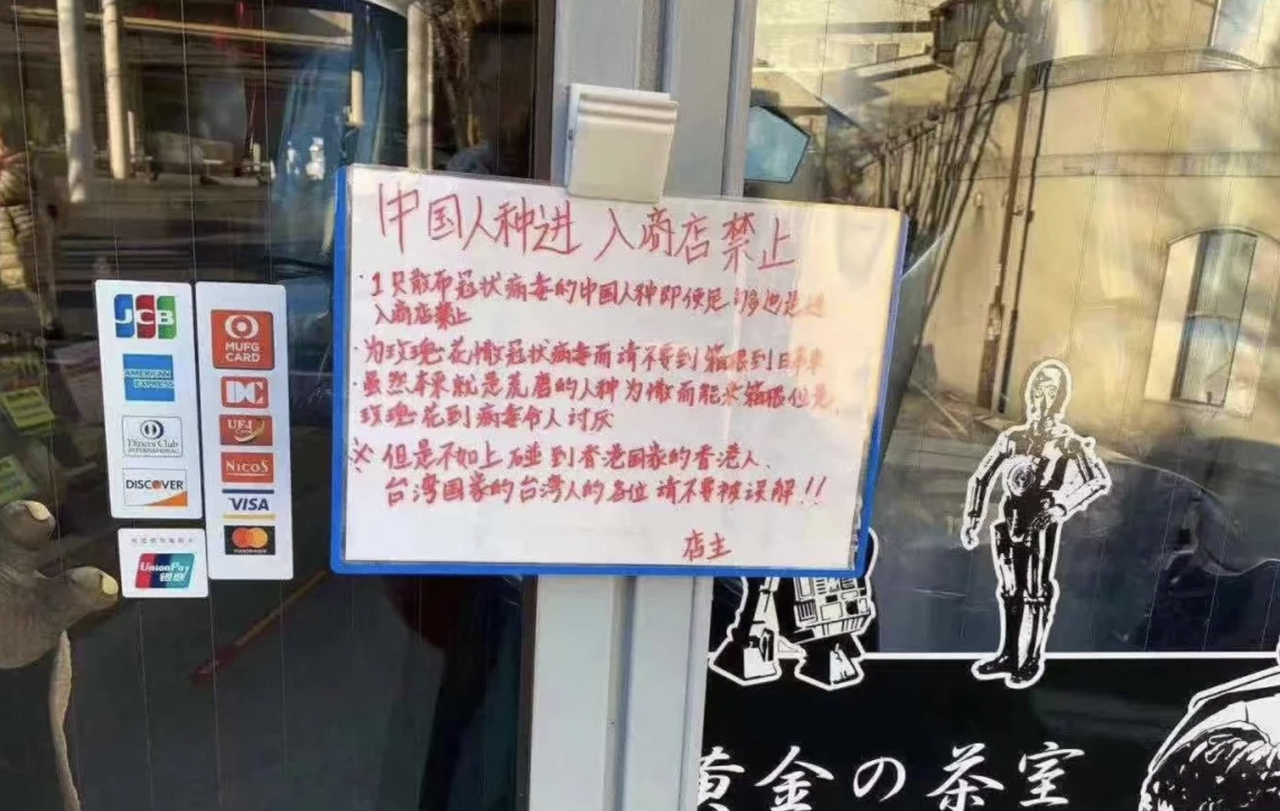
According to the SCMP, the as-yet-unidentified owner of the confectionery store told the Asahi newspaper that he used a translation application to write the message in Chinese, adding, “I want to protect myself from the virus and I don’t want Chinese people to enter the store.”
Japanese tourism officials apologized for the shopkeepers’ actions after he was roundly criticized on social media.
Shin Hae-bong, a professor of law at Aoyama Gakuen University, said the store owner was not breaking the law, as Japan doesn’t have any laws against discrimination on the books.
And while Chinese tourists could try to take him to court, that would take some time.
“This is obviously wrong, but the only thing that could be done would be for a suit to be filed as many Japanese courts have in recent years ruled against places that bar people based on their nationality,” she said.
“The courts have, in those cases, used the International Convention on the Elimination of All Forms of Racial Discrimination for the basis of their rulings.”
Japan Proposes Dumping Radioactive Waste Into Pacific As Storage Space Dwindles
Japan Proposes Dumping Radioactive Waste Into Pacific As Storage Space Dwindles
As the decade comes to an end, the future of nuclear power in the west remains in doubt. Almost nine years ago, a powerful underwater earthquake triggered a 15-meter tsunami that disabled the power supply and cooling at three of the reactors at the Fukushima Daiichi nuclear power plant.
The accident caused the nuclear cores of all three damaged reactors to melt down, prompting the government to issue evacuation orders for all people living within a 30 kilometer radius of the damaged reactors, a group that included roughly 100,000 people.

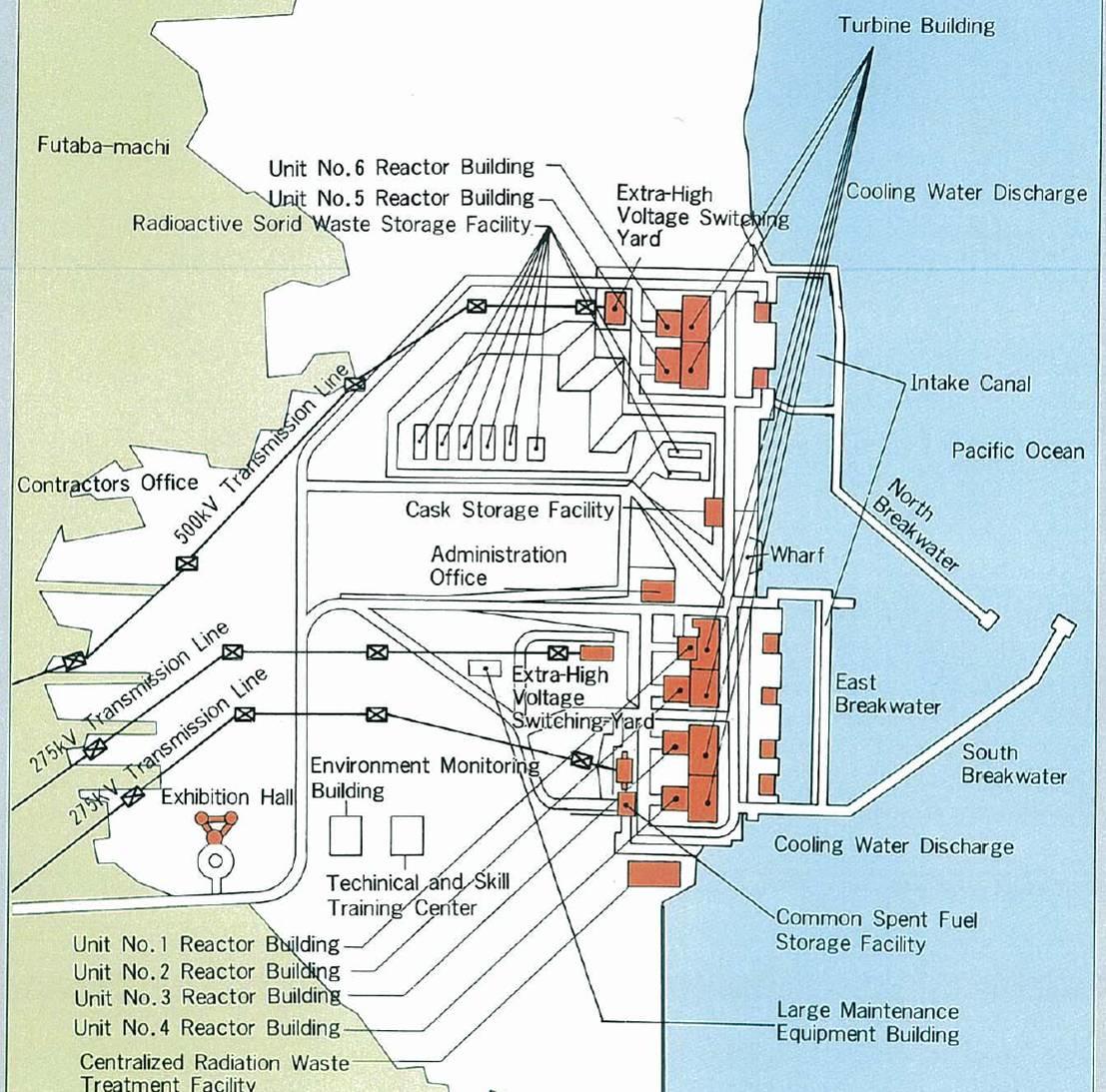
And the evacuation zone:
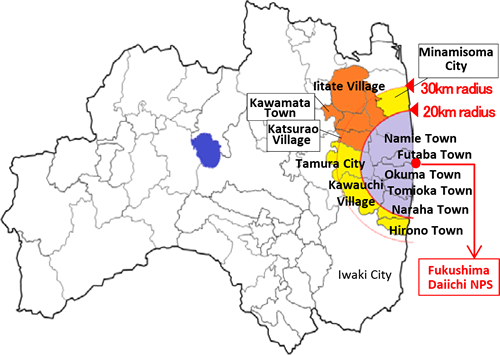
Now, the Epoch Times reports that Japan’s Economy and Industry Ministry has proposed that TEPCO gradually release, or allow to evaporate, massive amounts of treated but still radioactive water being stored at the power plant. TEPCO, or the Tokyo Electric Power Co, is the owner of the Fukushima plant, and is also responsible for leading the clean-up of the damaged reactors.
But as regulators have stepped in to try and guide TEPCO as it struggles to dispose of all the contaminated water, one ministry has offered a proposal that is almost guaranteed to anger the fishermen who have resisted all of TEPCO’s other plans for dumping the contaminated water.
In its Dec. 23 proposal, the ministry suggested a “controlled release” of the contaminated water into the Pacific. Offering another option, the ministry also suggested allowing the water to evaporate, or a combination of the two methods.
The government is stepping up the pressure on TEPCO to do something as Fukushima’s ‘radioactive water crisis’ worsens. The problem is that TEPCO is running out of room to store the contaminated water.
Inflation Is Coming: All the Trends That Were Deflationary Are Slowly Going in Reverse
Inflation Is Coming: All the Trends That Were Deflationary Are Slowly Going in Reverse
But of all potential economic outcomes, the one least anticipated and least priced in, is an uptick in inflation.
Investing is all about probabilities. If the perceived odds of an event are high, certain securities will be priced based on those expected probabilities. The corollary is that when an event is perceived as almost impossible, securities do not price in any chance of it occurring. If that event does occur, all sorts of securities need to re-price—often quite rapidly. I like to spend my time pondering what potential events the market completely ignores. Of all potential economic outcomes, the one that is least anticipated and least priced in, is an uptick in inflation.
It is said that generals always fight the last war. In terms of macro-portfolio wars, Japan’s experience with deflation colors all views. This seems odd to me because we have over two millennia of history showing inflation and currency debasements to be universal constants, with one outlier in Japan. The question is if Japan is the new normal or a true outlier?
Academics have studied the causes and effects of inflation ever since emperors and kings fixated on halting its effects. Despite a massive body of work, there is little agreement amongst experts on the causes of inflation. Since I tend to ignore “experts,” let me start by giving you the Kuppy definition of inflation. “Inflation is when too much of a certain currency chases a scarce resource and pushes its price higher when defined in terms of that currency.”
Using that definition, we’ve actually had rather dramatic inflation over the past decade—it just hasn’t shown up yet in the core consumer goods that central bankers are often concerned about.
…click on the above link to read the rest of the article…
Japan To Send Its Own Military Force To Strait Of Hormuz
Japan To Send Its Own Military Force To Strait Of Hormuz
Ever since the new round of ‘tanker wars’ began in Strait of Hormuz in mid-June with a mysterious mine attack on multiple tankers, one involving a Japanese-owned ship, Tokyo has reportedly mulled sending a Japanese defense force to the area to help protect vital shipping lanes.
In a rare move, the pacifist nation appears ready to pull the trigger, as FT reports, citing chief cabinet secretary, Yoshihide Suga, who indicated that “the government was planning to deploy forces in a region where a Japanese tanker, the Kokuka Courageous, was recently attacked with a limpet mine.”
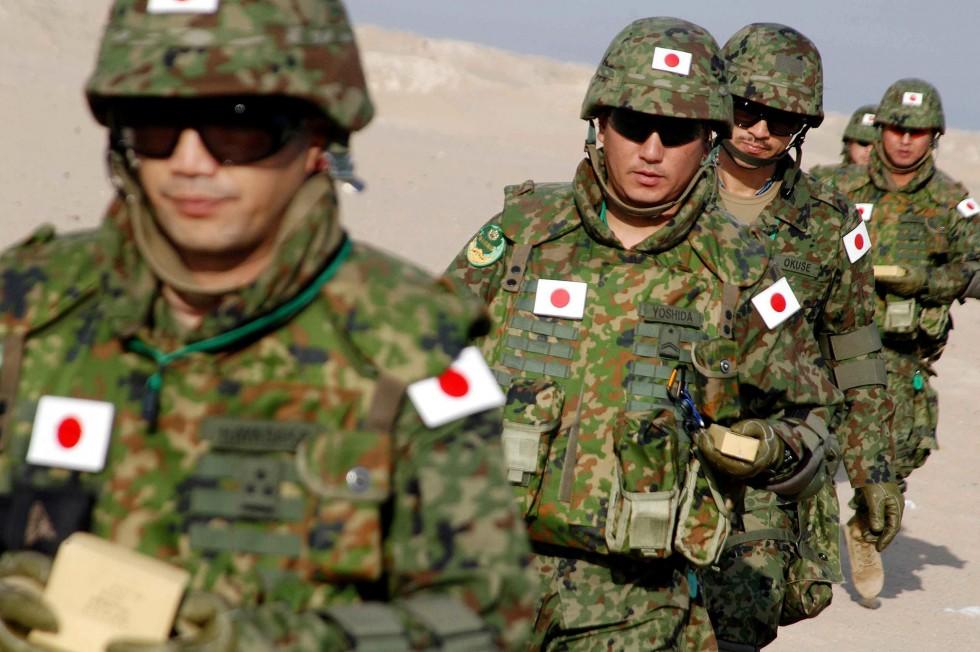
Japan’s Asahi newspaper also reported that the self-defense troop deployment to the vital Persian Gulf passage way comes “instead of joining the U.S.-coalition”.
Japan had been among many US allies urged to assist in forming a US-led maritime security patrol — a plan which many feared would only exacerbate tensions with Iran, only leading to war. In not joining the US-led security mission, Tokyo is ensuring it won’t damage important economic ties with Iran.
FT describes what such a Japanese expedition will likely involve:
A Japanese expedition would probably involve ships and aircraft from the Maritime Self-Defense Force. [Chief Cabinet Secretary] Mr Suga said its operations would be limited to international waters in the Gulf of Oman, the Arabian Sea and the Bab al-Mandab strait.
He said the dispatch would take place under provisions of Japanese law allowing for military information gathering and research. The pacifist constitution tightly proscribes how Japan can deploy its military and any ships it sends would use force only in self-defense.
…click on the above link to read the rest of the article…
FIAT CURRENCY ENDGAME: You Will Not Like This ONE BIT!
FIAT CURRENCY ENDGAME: You Will Not Like This ONE BIT!
No One Comes Back From This Uninjured. In one word, the devaluation is set to ESCALATE.
In fact, I term it Competitive Devaluation. There are several countries that will be the pioneers of it, but it will eventually reach the United States of America. In Europe and in Japan, we are closer to seeing it happening; in the next 2-5 years, you’ll hear about governments’ first official plans to do this.
They will NOT alert the media to notify the public to own gold and silver. They haven’t thus far (and they won’t going forward, either), and meanwhile they’ve been accumulating them at the fastest pace in more than half a century.
The central banks want to buy gold, uninterrupted. Since they do not buy silver, the mania that will ensue in that niche market will be huge.
Not just gold and silver stand to gain from devaluation; companies that are able to increase prices and not lose consumers will be great winners as well. These are the world-dominators with pricing power, and I will profile my top-5 holdings for the Endgame Decade (2020-2029) in a Special Report due to be published by September 30th.
Real estate prices in metropolitan areas will also continue to rise; these are hard assets that are difficult to increase in supply, but my analysis is that of the three – world-class companies, precious metals, and real estate, silver will be the BEST PERFORMER.
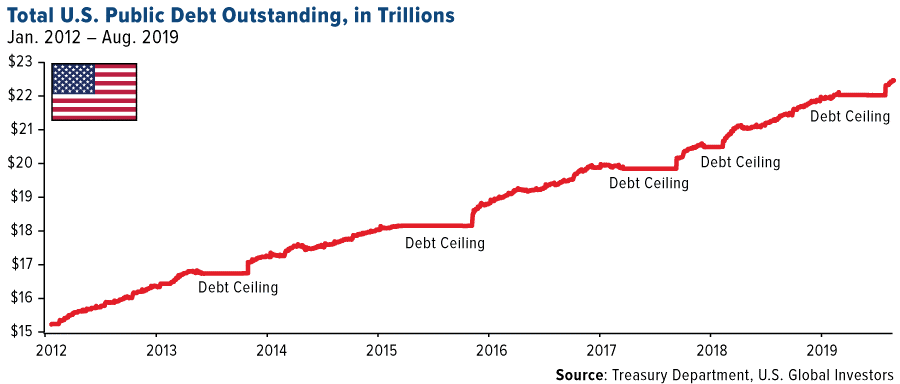
Central banks are not able to inflate the real debt levels away. The most extreme case of this is Japan, whose central bank has done ALMOST everything under the sun to relieve the country of its deflationary spiral and has failed miserably.
…click on the above link to read the rest of the article…
How Fukushima Changed Japan’s Energy Mix
How Fukushima Changed Japan’s Energy Mix
The 2011 Fukushima nuclear incident in Japan made international headlines for months, but it also changed Japanese attitudes towards nuclear energy. After a devastating tsunami hit Japan on March 11, 2011, emergency generators cooling the Fukushima nuclear power plant gave out and caused a total of three nuclear meltdowns, explosions and the release of radioactive material into the surrounding areas.
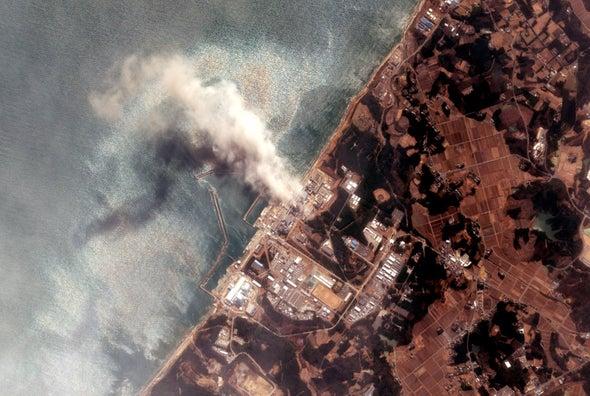
Before the incident, the Japanese had been known as steadfast supporters of nuclear energy, taking previous nuclear catastrophes at Three Mile Island (USA) or Chernobyl (Ukraine) in stride. But a meltdown on their own soil changed the minds of many citizens and kicked the anti-nuclear power movement into gear.
After mass protests, the Japanese government under then Prime Minister Yoshihiko announced plans to make Japan nuclear free by 2030 and not to rebuild any of the damaged reactors. New Prime Minister Shinzo Abe has since tried to change the nation’s mind about nuclear energy by highlighting that the technology is indeed carbon neutral and well suited to reach emission goals.
As Statista’s Katharina Buchholz notes, despite one reactor restart at Sendai power plant in Southern Japan in 2015, nuclear energy has almost vanished from Japanese electricity generation.

You will find more infographics at Statista
In 2016 (latest available), only 2 percent of energy generated in Japan came from nuclear power plants.
Coal and natural gas picked up most of the slack, but renewable sources, mainly solar energy, also grew after 2011.
Evacuations Ordered As Japan Issues Tsunami Alert After Large Offshore Quake
Evacuations Ordered As Japan Issues Tsunami Alert After Large Offshore Quake
A large magnitude 6.8 quake has struck off the northwestern coast of Japan. Kyodo news reports that authorities have issued a tsunami alert…
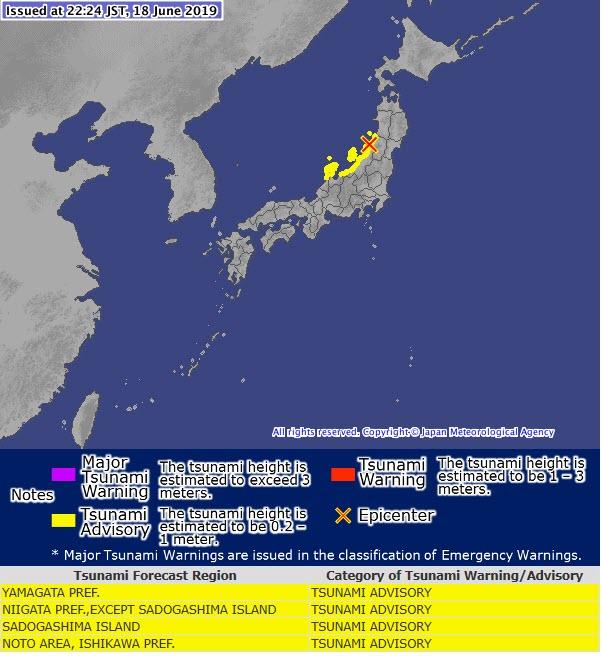
The quake hit at 22:22: 20 Japan time.
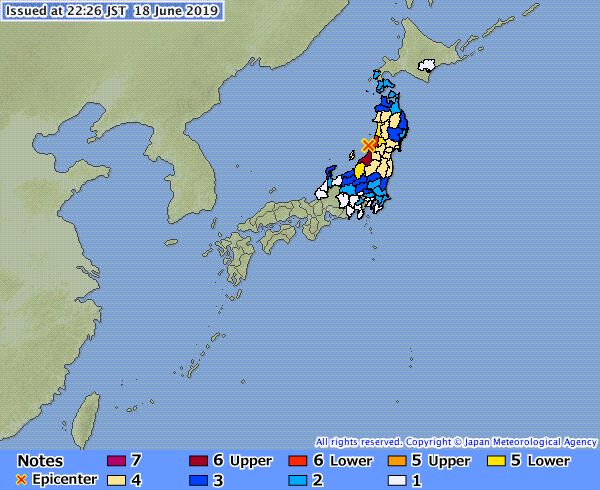
NHK reports than people working at ports on the northwest coast of Japan should evacuate, as tsunami warnings for waves as high as 1m are issued.
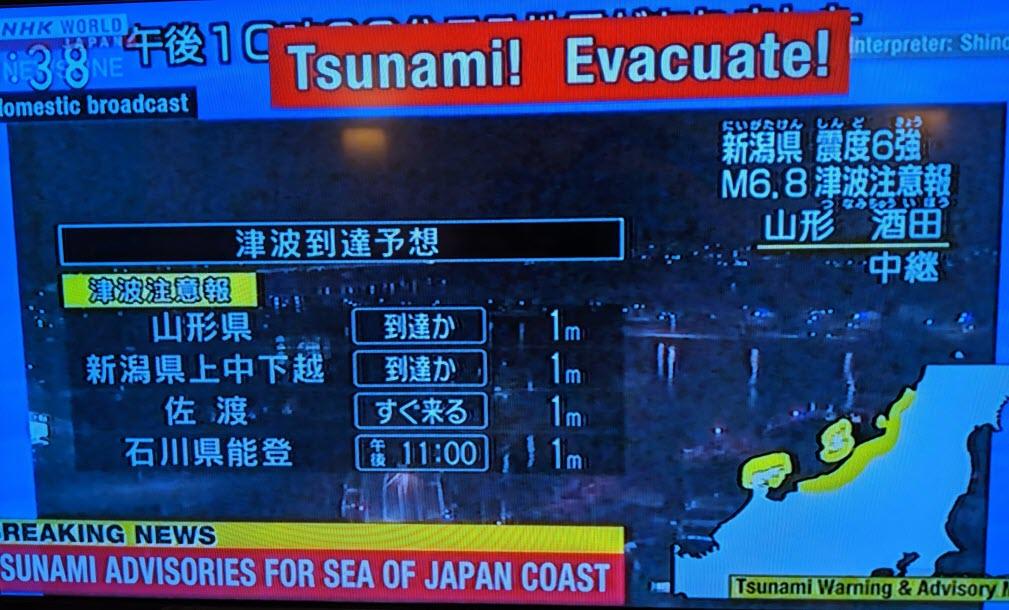
Additionally, NHK reports that there are no concerns over the nuclear reactors in Kashiwazaki.
Developing…
Trump Offered to Suspend Sanctions While Negotiating With Iran, Khamenei Rejected the Offer: More Attacks Expected
TRUMP OFFERED TO SUSPEND SANCTIONS WHILE NEGOTIATING WITH IRAN, KHAMENEI REJECTED THE OFFER: MORE ATTACKS EXPECTED

Japanese Prime Minister Abe Shinzo conveyed a message from US President Donald Trump to the Iranian leadership, asking the release of 5 US prisoners and inviting Iran to sit around a negotiation table, adding “he [Donald Trump] would be ready to suspend all sanctions only during the negotiations”. No guarantee was offered to freeze or revoke the sanctions. Sayyed Ali Khamenei, the Leader of the revolution, rejected the message and any dialogue with the US President and told his guest that he considers Trump unworthy to “to exchange a message with”.
Informed sources close to Iranian decision makers repeated the words of President Hassan Rouhani and the Iranian advisor to Sayyed Khamenei for international affairs, Ali Akbar Velayati, namely that “if Iran can’t export oil through the Persian Gulf, no-one in the Middle East will be able do this”. The source “expects further attacks in the future, given the US decision to stop the flow of oil by all means at all costs. Thus, oil will stop being delivered to the world if Iran can’t export its two million barrels per day”.

Two tankers – Kokuka Courageous and Font Altair – were attacked in the Gulf of Oman on Thursday, putting at risk the supply of oil to the West and making oil tanker navigation in the Middle East very unsafe. “One more attack and insurance companies are expected to increase their fees. More attacks and no insurance company will agree to cover any oil tanker navigating in Gulf waters, putting Iran and other oil-exporters at the same level. Moreover, let us see what justifications Trump and Europe will offer their people when the price of oil becomes unaffordable”, said the source.

…click on the above link to read the rest of the article…
Japanese Tanker Owner Denies Ship Hit By Mine, Says Crew Saw “Flying Objects” Before Attack
Japanese Tanker Owner Denies Ship Hit By Mine, Says Crew Saw “Flying Objects” Before Attack
For a moment on Thursday, it appeared that the US Navy had produced the ‘smoking gun’ to which Secretary of State Mike Pompeo had alluded during his statement from earlier in the day: CENTCOM footage which the Navy said purported to show Iran’s IRGC ‘caught in the act’ of trying to remove an unexploded mine from the Kokuka Courageous, one of the two tankers damaged in Thursday’s attacks.
CENTCOM said the video it released showed the IRGC removing an unexploded limpet mine from the side of one of the tankers, suggesting Tehran had sought to remove evidence from the scene.


Just in: Pentagon video of what it says is an Iranian boat removing an unexploded mine from one of the attacked oil tankers in the Gulf of Oman.
After the video’s release, Iran continued to deny any involvement in the attacks. And perhaps now we know why.
Because in comments that cast the entire narrative promulgated by the US in doubt, Yutaka Katada, the president of Kokuka Sangyo, the owner and operator of the Kokuka Courageous, said Friday that he doesn’t completely believe Washington’s version of events.
Instead, he said he believes the vessel wasn’t damaged by a mine, but by some kind of projectile, like, say, a torpedo. He called reports of a mine attack “false.” One reason is because a mine doesn’t damage a ship above sea level, like what was seen with the Courageous.
“A mine doesn’t damage a ship above sea level,” said Yutaka Katada, president of Kokuka Sangyo, the owner and operator of the vessel. “We aren’t sure exactly what hit, but it was something flying towards the ship,” he said.
…click on the above link to read the rest of the article…
Bank of Japan & the Bond Crisis
Bank of Japan & the Bond Crisis
The Great Financial Unknown is now upon us. After 10 years of Quantitative Easing, the European Central Bank (ECB) in Europe owns 40% of the national debts in the EU and it can neither sell them nor stop buying without creating a Panic in Interest Rates. Likewise, the Bank of Japan (BoJ) owns between 70% and 80% of the ETF bond market in Japan. The Bank of Japan confirmed it is ending free market determination of interest rates for the municipal level and that they “will not require any procedures such as auction as the method of determining lending conditions.” today it may introduce a lending facility for its exchange-traded fund buying program, which would allow it to temporarily lend ETFs to market participants.
4. Introduction of Exchange-Traded Fund (ETF) Lending Facility
The Bank will consider the introduction of ETF Lending Facility, which will make it possible
to temporarily lend ETFs that the Bank holds to market participants.
The statement at the end of the announcement on the last page on its monetary policy has left traders in shock. This appears that the BoJ realizes that it now effectively has destroyed its bond market and realizes that there is not only the end of a free market, but there is a contagion of surrounding lack of liquidity.
We have never before in the history of human society ever witnessed such a major financial crisis. The BoJ makes it clear it will continue its policy of Quantitative Easing. It stated plainly:
The Bank will continue with “Quantitative and Qualitative Monetary Easing (QQE) with
Yield Curve Control,” aiming to achieve the price stability target of 2 percent, as long as it is
necessary for maintaining that target in a stable manner.
…click on the above link to read the rest of the article…
Japanified World Ahead
Japanified World Ahead
Losing Decades
Too Much, Too Fast
A $10 Trillion Federal Reserve Balance Sheet
Mastering Private Markets
Living on Puerto Rico Time
Regular readers may have noticed me slowly losing confidence in the economy. Your impression is correct and there’s a good reason for it, as I will explain today. The facts have changed so my conclusions are changing, too.
I still think the economy is okay for now. I still see recession odds rising considerably in 2020. Maybe it will get pushed back another year or two, but at some point this growth phase will end, either in recession or an extended flat period (even flatter than the last decade, which says a lot). And I still think we are headed toward a global credit crisis I’ve dubbed The Great Reset.
What’s evolved is my judgment on the coming slowdown’s severity and duration. I think the rest of the world will enter a period something like Japan endured following 1990, and is still grappling with today. It won’t be the end of the world; Japan is still there, but the little growth it’s had was due mainly to exports. That won’t work when every major economy is in the same position.
Describing this decline as “Japanification” may be unfair to Japan but it’s the best paradigm we have. The good news is it will spread slowly. The bad news is it will end slowly, too.
I believe we will avoid literal blood in the streets but it will be a challenging time. We’ll be discussing how to get through it more specifically at the Strategic Investment Conference next month. It is now sold out but you can still buy a Virtual Pass that includes audio and video of almost the whole event. Click here for information.
…click on the above link to read the rest of the article…
The Bank Of Japan Bought 5.6 Trillion Yen In Stocks Last Year
The Bank Of Japan Bought 5.6 Trillion Yen In Stocks Last Year
There is no means of avoiding the final collapse of a boom brought about by credit expansion. The alternative is only whether the crisis should come sooner as the result of a voluntary abandonment of further credit expansion, or later as a final and total catastrophe of the currency system involved.
– Ludwig von Mises, Human Action
In recent years, thanks to central bank intervention in virtually every asset class, writing about capital markets in the context of some valuation or fundamental analysis framework has become a laughable, surreal, and self-defeating exercise, and here is a perfect example why.
For one reason or another, overseas investors dumped Japanese stocks by the largest margin in 31 years in the fiscal year ended Sunday, according to official market data: specifically, market participants abroad unloaded about 5.63 trillion yen ($50 billion) worth of shares on a net basis, the Tokyo Stock Exchange reported Thursday, for a second straight year of net selling and the highest sell-off since 1987.
And yet this barely caused a ripple in asset prices for one simple reason: the Bank of Japan’s asset purchases absorbed all the bleeding, exposing the central bank’s outsize role in the market. Indeed, as the Nikkei adds, this near-record liquidation was matched nearly yen for yen by the BOJ’s pumping of money into the economy through asset purchases, with the central bank buying 5.65 trillion yen worth of equity!
Of course, there were legitimate reasons why foreign investors felt the urge to liquidate Japanese holdings: international investors unloaded Japanese shares as they became alarmed by concerns about a global slowdown. With many Japanese manufacturers reliant on exports, overseas analysts cut their recommendations for those stocks amid China’s decelerating economy and Beijing’s trade war with the US.
…click on the above link to read the rest of the article…
The Japanification of the World
The Japanification of the World
Zombification / Japanification is not success; it is only the last desperate defense of a failing, brittle status quo by doing more of what’s failed.
A recent theme in the financial media is the Japanification of Europe.Japanification refers to a set of economic and financial conditions that have come to characterize Japan’s economy over the past 28 years: persistent stagnation and deflation, a low-growth and low-inflation economy, very loose monetary policy, a central bank that is actively monetizing debt, i.e. creating currency out of thin air to buy government debt and a government which funds “bridges to nowhere” and other stimulus spending to keep the economy from crashing into outright contraction.
The parallels with Europe are obvious, but they don’t stop there: the entire world is veering into a zombified financial, economic, social and political status quo that is the core of Japanification.
While most commentators focus on the economic characteristics of Japanification, social and political stagnation are equally consequential. If we only measure economic/financial stagnation, it appears as if Japan and Europe are holding their own, i.e.maintaining the status quo via near-zero growth and near-zero interest rates.
But if we measure social and political decay, the erosion is undeniable. Here’s one example. Few Americans have access to or watch Japanese TV, so they are unaware of the emergence of the homeless as a permanent feature of urban Japan. The central state propaganda media is focused on encouraging tourism, a rare bright spot in Japan’s moribund economy, and so you won’t find much media coverage of homelessness or other systemic signs of social breakdown.
If you watch Japanese detective / police procedural dramas, however, you’ll find constant references to homeless people and homeless encampments: detectives seek witnesses to a crime in the nearby homeless encampment; a homeless man living in an abandoned warehouse is found murdered, etc.
…click on the above link to read the rest of the article…
Rabo: The World Is Banking On China (But Japan Points To Our Future)
Rabo: The World Is Banking On China (But Japan Points To Our Future)
Market comments
There is a saying in the market that if you want to see the future of monetary policy, you just have to look at Japan. Well, as expected, BoJ Governor Kuroda and his team decided to keep policy unchanged, despite a fresh downward adjustment of its economic assessment. Two out of the nine board members dissented, with one of them being very outspoken in favour of more easing, thus underlining the dovish slant. But, like in Europe, headwinds are mostly blowing from the external environment, leading to weaker exports and industrial output – according to the Bank. In essence, the Japanese economy is feeling the hurt from slower global growth as a result of Brexit, protectionism and the slowdown in China.
And apparently Japanese monetary policy makers still have some hope the economy can recover from this downdraft pretty quickly or that any ongoing weakness would be offset by a better domestic economy. But when many central banks are thinking like that, you can be sure it won’t add up! Or are we all banking on the Chinese now? Well, at least Mr. Draghi and Mr. Kuroda seem to be on the same page, with Kuroda saying this morning that “China’s stimulus is pretty big and will have an impact”.
Even more worrisome is that refraining from action whilst keeping up a brave face perhaps only highlights that the central bank has ran out of options. Despite being arguably the most aggressive central bank in terms of monetary easing since 2008, underlying inflation’s basically gone nowhere (inflation ex-food and energy being at a paltry 0.4% y/y). And while there is an increasing chorus –recently joined by finance minister Taro Aso– to lower or make more flexible the BoJ’s 2% inflation target, Mr. Kuroda confirmed this morning that this is not (yet) the way to go.
…click on the above link to read the rest of the article…


